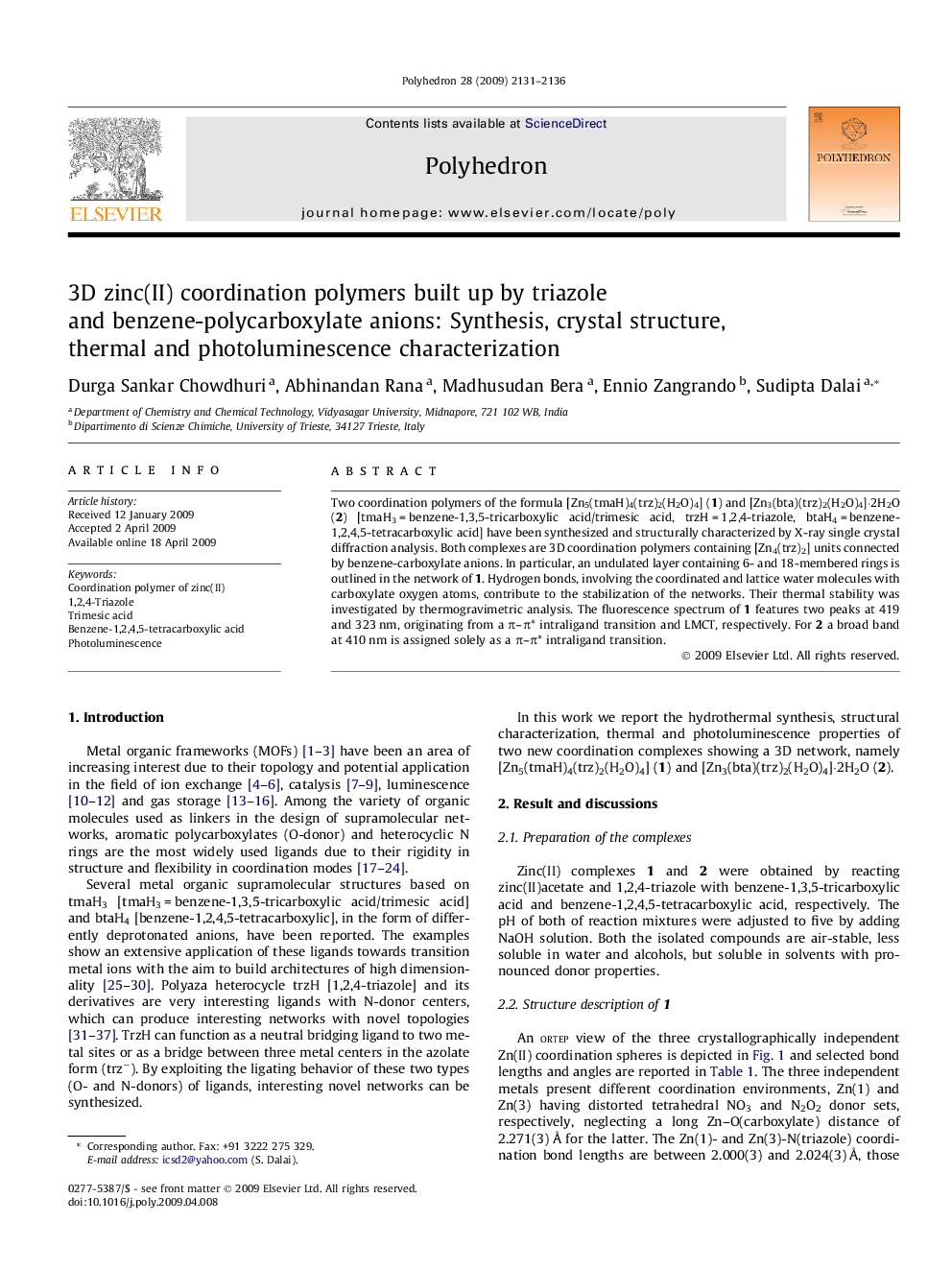| کد مقاله | کد نشریه | سال انتشار | مقاله انگلیسی | نسخه تمام متن |
|---|---|---|---|---|
| 1334941 | 979487 | 2009 | 6 صفحه PDF | دانلود رایگان |

Two coordination polymers of the formula [Zn5(tmaH)4(trz)2(H2O)4] (1) and [Zn3(bta)(trz)2(H2O)4]·2H2O (2) [tmaH3 = benzene-1,3,5-tricarboxylic acid/trimesic acid, trzH = 1,2,4-triazole, btaH4 = benzene-1,2,4,5-tetracarboxylic acid] have been synthesized and structurally characterized by X-ray single crystal diffraction analysis. Both complexes are 3D coordination polymers containing [Zn4(trz)2] units connected by benzene-carboxylate anions. In particular, an undulated layer containing 6- and 18-membered rings is outlined in the network of 1. Hydrogen bonds, involving the coordinated and lattice water molecules with carboxylate oxygen atoms, contribute to the stabilization of the networks. Their thermal stability was investigated by thermogravimetric analysis. The fluorescence spectrum of 1 features two peaks at 419 and 323 nm, originating from a π–π∗ intraligand transition and LMCT, respectively. For 2 a broad band at 410 nm is assigned solely as a π–π∗ intraligand transition.
Two new 3D hydrogen bonded zinc (II) coordination polymers have been synthesized using the benzene-1,3,5-tricarboxylate dianion or the benzene-1,2,4,5-tetracarboxylate tetra anion, with 1,2,4-triazolate. Both compounds were characterized by their X-ray single crystal structures, and by thermal and photoluminescence studies.Figure optionsDownload as PowerPoint slide
Journal: Polyhedron - Volume 28, Issue 11, 6 July 2009, Pages 2131–2136